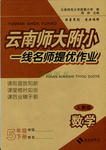题目内容
Love Is Blind: The Magic of Tabby
In October, 2003 I started my work at my local animal shelter’s Adoption Department. Over the years, more than 50,000 animals have ______ the doors of the shelter. Most of them, I do not remember. But occasionally there are ______ animals, who touch me so deeply that I could never possibly ______ them. Tabby was one such animal. Tabby was an ancient Cocker Spaniel, probably 14 years old. What’s more, she was blind and deaf. Tabby’s chances at adoption seemed ______ at best. After all, we didn’t have many adopters coming in ______, “Can you show me all of your really old dogs who are also ______ ?” We had all thought that Tabby would live out the rest of her life at the ______.
One day a woman named Loretta came to the shelter. Her son, Gary, had ______ Tabby’s picture and stories on the shelter’s website at home. They were interested in meeting her! It was the only ______ we ever received about Tabby. What could a young child possibly see in a 14-year-old dog who was both blind and deaf? Most boys would want a dog who could grow with them and ______ through grassy fields on summer days. Tabby would ______ be able to do that. But after meeting her, Loretta and Gary decided that she was the right dog for their family. They adopted Tabby! If Tabby’s story had simply ended with her ______ adoption, it would still have been something very special indeed. ______, it was what happened after her adoption that people might regard as “magic”. Gary _____ from seizures(癫痫). Since Gary and Tabby met they became ______. They did everything together. They became so “in tune” with one another that Tabby began to telegraph Gary’s seizures ______ they occurred, giving his family ______ that one was about to strike. What’s more, Gary seemed to be having fewer and fewer seizures since Tabby’s ______.
How could it be? Nobody could explain _____ Tabby did it. But those of us who were fortunate enough to know her and her family had ______ the magic, the kind that has its roots in love.
1.A. broken B. passed C. painted D. locked
2.A. strange B. active C. wild D. special
3.A. recall B. leave C. forget D. abandon
4.A. remote B. great C. fair D. potential
5.A. wondering B. stating C. seeking D. asking
6.A. stubborn B. active C. disabled D. patient
7.A. hospital B. shelter C. farm D. roadside
8.A. posted B. taken C. seen D. drawn
9.A. letter B. donation C. call D. enquiry
10.A. get B. run C. look D. break
11.A. often B. possibly C. never D. generally
12.A. successful B. normal C. temporary D. early
13.A. However B. Moreover C. Therefore D. Otherwise
14.A. learnt B. suffered C. heard D. differed
15.A. indifferent B. uncomfortable C. unfortunate D. inseparable
16.A. since B. unless C. before D. though
17.A. explanation B. notice C. suggestion D. warning
18.A. arrival B. birth . C. return D. recovery
19.A. where B. how C. when D. whether
20.A. witnessed B. created C. achieved D. performed
 云南师大附小一线名师提优作业系列答案
云南师大附小一线名师提优作业系列答案

 ker its voice and identity.
ker its voice and identity.